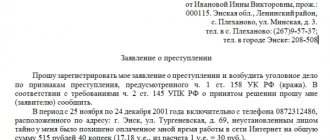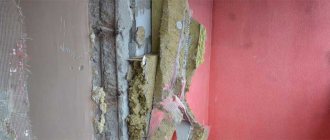Damage to someone else's property is a negative impact on various items, provided that as a result they lose their properties or become unusable.
This may be an act of burning, destruction or even destruction using chemical compounds. An important condition is that once the damage has been caused, things can no longer be restored.
You can find out more about the liability provided for actions of this kind in Articles 167 and 168 of the Criminal Code. What will be the punishment?
Damage to property: definition and types
The legal dictionary means that damage is the loss of the original quality of objects under the influence of external factors. Property is a set of material assets that are in the possession of individuals/legal entities, municipal authorities or the state. Classification of circumstances of damage to someone else's property:
-according to the degree of damage caused (complete destruction, partial damage);
- according to the degree of intent (intentional, unintentional);
-by the subject of the offender (adults, teenagers, employed citizens);
- on the subject of the violation (damage to personal property of individuals, property of organizations, municipalities, states);
-depending on the applicable legislative norm (Administrative Code, Criminal Code, Civil Code or Labor Code).
Attention! Punishment is applied to guilty persons only after proving the guilt of the offender and the extent of the damage caused.
What does “destruction” of someone else’s property mean?
Destruction implies the impossibility of further use of the item. But the definition of “damage” leaves such a possibility.
This means that once damaged, items can still be repaired and returned to normal.
The elements of a crime include such factors as the commission of the crime, the motives of the offender and the consequences of his actions.
A crime does not always involve an action. In this case, inaction may also be a criminal act. For example, the defendant saw a house burn but took no action to stop the fire or call for help.
And the consequence may be damage to property or its complete destruction, which will harm the financial situation of the owner.
Administrative responsibility
Article 7.17 of the Code of Administrative Offenses specifies a violation in the form of deliberate destruction or partial damage to material assets. The fact of liability is not affected by the type of property in relation to which illegal actions were committed. The main thing is confirmation of the amount of damage caused. A citizen will be held accountable only when the assessment of damage does not exceed insignificant amounts, namely 5,000 rubles. The only type of penalty applied to violators in this case is a fine. Its size varies between 300-500 rubles. The punishment is assigned by the judge considering the material. A protocol on violation is drawn up by the police and submitted to the magistrate’s court of the locality.
Attention! For causing damage to property, according to the Code of Administrative Offenses of the Russian Federation, citizens who have reached the age of 16 can be held accountable.
The procedure for drawing up an act in free form
Next, we will try to consider the procedure for drawing up an act using a simple example. Let's imagine that your neighbors flooded your apartment, as a result of which expensive technical devices were damaged, beyond the chance of repair.
Even if the neighbors admit their guilt and promise to compensate for the damage caused, an act must be drawn up. This will help protect yourself from any surprises.
And if the neighbors do not want to compensate for the damage, then the act will be accepted as case material when filing a claim.
The victim can draw up a report in free form. The main condition is the presence of some important data:
- Document number, as well as the date and place of its preparation;
- Personal information about the applicant;
- All persons who took part in drawing up the application. This is the owner of the apartment, the culprit of the incident, neighbors, representatives of the house and other persons;
- Detailed information about the floor and apartment number;
- The description should cover all the facts of the incident, as well as tell about the property and the extent of its damage.
Using the written act, the victim needs to contact an independent examination center. This will help to conduct an accurate check to find out the amount that is due for the damage caused.
Intentional commission
Article 167 of the Criminal Code of the Russian Federation fixes the types of liability for intentional actions aimed at partial or complete destruction of property. To bring the perpetrator to justice, the following signs must be taken into account:
—Material damage.
The amount of damage must exceed 5,000 rubles. The crime is considered completed only from the moment of occurrence of illegal consequences - assessment of damage.
-Intent
. The guilty citizen must be aware of the illegality of his actions and the illegality of the consequences. During pre-trial investigative measures, the official will have to confirm that the person wanted the destruction or damage of property.
—
Only persons who have reached the age of 16 can be subject to punishment (when applying Part 2 of this article - from the age of 14).
Art. 167 of the Criminal Code of the Russian Federation consists of two parts. The second part provides for a more severe penalty and is applied if property is damaged under the following circumstances:
-from hooligan motives;
-method of commission – arson, explosion or other method dangerous to society;
- unintentional death of a person;
- causing grave consequences by the act (moderate bodily injury to two or more victims, severe injury to one, destruction of housing, prolonged stoppage of enterprise activities or stoppage of heat supply, water, etc.).
| Intentional damage to property | ||
| Types of punishment | Part 1 Art. 167 | Part 2 Art. 167 |
| Fine | up to 40,000 rubles/3 months of income | – |
| Correctional work | up to a year | – |
| Mandatory work | up to 360 hours | – |
| Forced labor | up to 24 months | up to 5 years |
| Arrest | up to 90 days | – |
| Deprivation of liberty | up to 2 years | up to 5 years |
Determining the cost of damage
During the preliminary investigation, an examination of the damaged property is carried out. The expert assesses the market value at the time of damage or loss, taking into account the degree of wear and tear and the possibility of restoring the property.
In criminal cases, the following objects are usually assessed:
- cars: if the car is burned, then the expert uses official data on the average market value of the car in a given city, taking into account the characteristics provided by the owner;
- expensive equipment: the technical condition of the object and information about the manufacturer are taken into account;
- real estate: the cadastral value of the property on the day of the crime is assessed;
- expensive goods (for example, clothing made of fur or genuine leather): assessed on the basis of receipts, checks provided to the victims.
The final report of the appraiser contains all the necessary information - analysis of documents and materials, description of methods and approaches to the procedure, calculations of damage and wear, estimates for restoration work, and other data.
Damage to property due to negligence
Article 168 of the Criminal Code of the Russian Federation establishes sanctions for the same actions, but caused without direct intent. In particular, the following signs of a criminal act must be taken into account:
- the age of the offender must exceed 16 years;
-material damage occurs due to careless handling of high-risk objects (fire, vehicles, electricity, technical equipment);
- lack of direct intent, that is, the offender committed the act knowing the danger of his actions, but hoped to avoid damage.
Depending on the identified circumstances of the case, the judge may impose one of the following types of punishment:
-penalties up to a maximum of 120,000 rubles (12 months’ salary);
-compulsory work (no more than 480 hours);
-correctional labor (only up to 24 months);
-up to 1 year of forced labor/restriction or imprisonment.
Arbitrage practice
In June 2021, police officers from the Krasnoarmeysky district detained a 39-year-old relative of an elderly victim, suspected of extortion and intentional damage to property. The victim informed the authorities about the arson of her house. The amount of damage is 2 million rubles. It turned out that in the past the man demanded that the property be transferred to him and threatened to destroy the house. 2 criminal cases were opened under the articles “Extortion” and “Deliberate destruction or damage to property.” According to them, the accused risks receiving a prison sentence of up to 15 and 5 years, respectively.
In June 2021, a 57-year-old man contacted the Podolsk police and reported damage to his parked car in the amount of 22 thousand rubles. Soon, law enforcement officers detained a 26-year-old local resident. Currently, he has been given a written undertaking not to leave the place. For deliberately destroying someone else's car, he faces up to 5 years in prison.
In June 2021, a resident of Abakan became the culprit of an accident and caused damage to someone else’s car for 100 thousand rubles, but did not compensate for it. As a result, FSSP officers arrested his car, but the vehicle turned out to be unclaimed. The victim ended up taking the car to pay off the debt, and the culprit was additionally required to pay an enforcement fee.
The subject of the crime is state or municipal property
Vandalism, qualified by Article 214 of the Criminal Code of the Russian Federation, will be included in a special category of actions.
Vandalism in legal law is usually understood as:
-Intentional actions with the intent to cause harm. If the act was committed due to negligence, liability under Art. 214 of the Criminal Code cannot be applied.
-The subject, that is, the object to which the violation is directed, is buildings and structures, regardless of the form of ownership. This category also includes damage to state (state), municipal, and common property.
-Place of occurrence: public places or public transport.
-The peculiarity of the acts is desecration, disfigurement. That is, the object can continue to be used for its intended purpose, but the appearance of the structure (transport) is damaged.
-Only persons over the age of 14 can be punished.
Art. 214 of the Criminal Code of the Russian Federation consists of two parts. The first part provides punishment for a crime committed without aggravating features. The second part has qualifying characteristics for which more severe punishment is provided. These signs are:
- a group of persons takes part in the commission;
- the motive for the offense was racial and other social prejudices - discrimination.
| Damage to property due to vandalism | ||
| Types of punishment | Part 1 Art. 214 | Part 2 Art. 214 |
| Arrest | up to 3 months | – |
| Correctional work | up to 12 months | – |
| Mandatory work | up to 360 hours | – |
| Fine | up to 40,000 rubles/3 months of income | – |
| Deprivation of liberty | – | – |
| Forced labor | – | – |
| Restriction of freedom | – | up to 3 years |
Basic Concepts
Criminal and administrative liability is provided for special and accidental damage to property.
Administrative punishment occurs if the culprit intentionally damages an item worth up to 5 thousand rubles - for example, damages shoes, window glass, cables, or breaks goods in a store. The condition is the presence of intent and guilt of a person. Authorized persons interview witnesses and receive video from surveillance cameras.
If a person caused minor damage to property - up to 5 thousand rubles - but authorized persons found out that this was done by accident, without intent, then he is exempt from administrative liability. If a person through negligence causes damage to property exceeding 250 thousand rubles, then administrative liability awaits him.
Criminal liability awaits a person for intentional damage to property, the damage to which amounted to 5 thousand rubles.
When conducting pre-investigation checks, law enforcement agencies take into account both the value of the damaged property (or the costs of its restoration) and the significance of this property for the victim and for his financial condition.
Thus, the crime consists of intentional damage to the front door of a car in the amount of 5 thousand rubles for a single mother who works as a teacher in a kindergarten and herself provides for two minor children with a salary of 16 thousand rubles. If the accused intentionally damaged the rear-view mirror of a premium car of the director of a company with a salary of 350 thousand rubles, and the amount of damage was 30 thousand, then this circumstance does not form a crime.
If, for example, a passerby broke the glass of a non-working pensioner, the cost of repairing which is 2 thousand rubles, then such actions do not constitute a crime. The violator will face liability under Art. 7.17 Code of Administrative Offenses of the Russian Federation.
Civil regulation
Regardless of whether the actions of the guilty person contain signs of an administrative or criminal offense, the issue of claiming the amount of damage caused is additionally considered. Compensation for losses occurs through civil proceedings. In Art. 304 of the Civil Code of the Russian Federation states that the owner of property (individual, organization, municipality, state) has the right to compensation for damage in court. Art. 1084 of the designated code fixes the need to pay monetary compensation to persons who suffered from illegal actions that resulted in harm to health. The procedure for claiming funds is described in the provisions of the Civil Procedure Code.
Intentional damage to someone else's property
The criminals stole a car and dismantled it into parts, the robber entered the house and burned property to hide his tracks - these, and other actions of a similar nature, fit the definition of “intentional.” They are described in detail in Article 167 of the Criminal Code.
Intentional destruction is the impact on an item that led to its complete unsuitability for use.
And the definition of “deliberate” here indicates that the attacker acted intentionally and well understood what his actions would lead to. This could be a desire to get money, hide your tracks, or even revenge on the owner of the item.
Labor legislation
Clause 6 art. 81 of the Labor Code of the Russian Federation stipulates the reasons for terminating working legal relations with a working citizen unilaterally at the initiative of the employer. One of these conditions is causing intentional damage to the organization’s property. Deliberate damage to property at an enterprise (or its complete destruction) can become grounds for dismissal only after the relevant court decision has entered into legal force.
Art. 238 of the Labor Code indicates which actions will be considered a labor misconduct, namely:
-deterioration of the condition of property on the company’s balance sheet;
-reduction in the number of corporate assets.
Disciplinary measures are applied as punishment. These include oral reprimands and those recorded in the worker’s personal file. The last resort, as noted above, is dismissal.
At what age is liability required?
According to the resolution of the Criminal Code of the Russian Federation, responsibility begins at the age of 16.
But here you can find an exception, which states that liability can begin from the age of 14 in certain cases.
The procedure for drawing up the act
The victim must draw up an act of committing a crime, regardless of intentional or accidental influence, in order to record the fact of the incident.
According to existing practice, acts are most often drawn up for the following reasons:
- The victim ordered an item that was broken during delivery;
- As a result of a fire or flood, technical devices were damaged or partially became unusable;
- Damage to property occurred at the enterprise. In this case, the report must be drawn up at the time the equipment is sent for repair;
- The guest intentionally or accidentally damaged the living room property. The act will be required to receive compensation;
- If the neighbors flooded the apartment, then the drawn up act will help to achieve compensation.
Reporting a crime to the police
Regardless of whether the act contains an administrative or criminal offense, the injured person must contact the nearest police station.
Important! After the application is accepted, verification measures are carried out on it, including establishing the amount of damage caused.
Most often, such checks are carried out by local police officers or detectives. The results of the preliminary check determine whether the perpetrator will be held accountable, and if so, what kind of liability it will be.
Procedure for the victim
If the amount of damage is significant and there are grounds for initiating a criminal case, then the victim must contact the police and draw up a statement demanding to punish the culprit and recover from him the amount of damage caused.
The application should include the following information:
- information about the addressee: full name, address, position, contacts;
- information about the addressee: full name, address, contact details;
- request to register a statement and initiate a criminal case;
- description of the circumstances: what property was damaged and when, the amount of damage, the alleged culprit;
- an indication that the applicant is aware of the legal consequences for knowingly making a false denunciation;
- list of attached documents;
- date, signature of the applicant.
You can view a sample application at this link.
The application is reviewed within 10-30 days. After this period, a decision is made to initiate or refuse to initiate a criminal case. If a refusal is made, the applicant will be informed of the reasons for this decision.
If a criminal case is filed, the victim must initiate legal proceedings. A claim must be filed before the completion of criminal proceedings.
The claim must include the following information:
- name of the court, address;
- information about the plaintiff and defendant: full name, name of legal entity, addresses, contacts;
- description of the circumstances: type of property, amount of damage, culprit;
- request to bring the culprit to justice;
- list of attached documents;
- date, signature.
The claim can be found at this link.
may be required :
- title documentation for property (for example, a car purchase and sale agreement);
- a copy of the property inspection report;
- copies of postage receipts;
- receipt of payment of state duty;
- warranty cards, sales receipts and other documents.
You can bring witnesses to the case, whose testimony will be taken into account by the court.
Who will assess the amount of damage caused to the victim?
To determine the article for damage to property, the court must have information about the amount of material damage. It is determined by authorized persons or organizations. Typically, these are independent experts specializing in a certain category of material assets. When understanding the issue at hand, they take into account the service life of the item or equipment, its brand, and technical characteristics. If the victim has receipts indicating the cost, they are also taken into account. If it is not possible to determine the price from the documents, the average market value of an object with the same characteristics is taken into account.
Having expert opinions in hand, police officers classify the case and determine the further development of the case. Afterwards, the procedure will take place in the prescribed manner, and the case will be considered by the court. Based on the results of the meeting, a fine for damage to property or other penalties will be determined.








